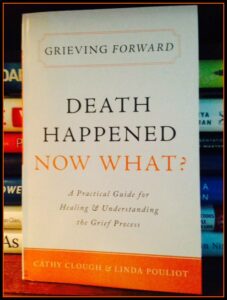To Mourn Is To Heal
He that lacks time to mourn lacks time to mend. —Sir Henry Taylor
Mourning
Mourning is the external, outward expression of grief. It’s the public side of grieving. All the normal outward expressions of emotional pain, mental pain… All the stuff that makes many people very uncomfortable—because as a culture, generally speaking, we are very uncomfortable/fearful when faced with significant loss of any kind, mourning—and the darkness that grief brings.
In a nutshell, the darkness—and the reality—that significant loss, grief and mourning bring scares many people. Especially after a death because death shines the spotlight on the fact that mortality is reality. Death is the ultimate reminder that each one of us has an expiration date. That what happened in your family can happen in my family—or to me. Who’s next? Where am I going to spend eternity?
The following is the short list of normal outward expressions of grief that make caring people say dumb things. Uncaring people say horrible things. And can make scared people turn on a dime and run in the other direction when they spot us in the grocery story—or duck down and hide behind a clothing rack in a department store…
Healing Side Note
Humor is part of healing. If you have lost your sense of humor keep looking for it until you find it again. For example. Finding your sense of humor once again can mean having a bit of fun the next time you see said grocery store person. You can ask them why in the world—after you locked eyes with them and waved at them—did they turn and run out of the front door of the grocery store. Or leaning over the clothing rack in the department store and with a big smile on your face asking them what the heck that are doing… Back to the list.
To Mourn Is to Heal—The Short List
Cultural practices or rituals such as wearing black, preparing for the funeral, attending the funeral dinner, wake, memorial service, religious rituals, lighting candles, planting trees…
Other examples are normal shock, numbness, sadness. Tears of grief, wailing, sharing memories/talking about our loved one, sharing our painful thoughts and feelings. Sharing newfound doubts/struggles related to our faith—which makes some people panic. Or conversely, sharing how our faith is growing stronger—which makes other people think we’re delusional. More examples are singing, dancing, writing, art, music… Grief vs. Mourning: What’s The Difference
What About Children?
Children mourn too. And children (and possibly an adult or two…) may act out or have nightmares, temper tantrums, or be aggressive, clingy—or possibly overly happy… Check out the list of Normal Grief Reactions.
Both adults and children need the freedom to talk about what happened and to share what they are thinking and feeling and to know that they have been heard. No one should be told to be quiet—or that they shouldn’t feel the way that they do. Or told not to cry—because big boys or big girls don’t cry—a childhood myth that is not true. And no one should be told that they aren’t grieving they’re just crazy or not being politically correct…
Sadly. Sometimes it’s necessary to put a friendship on the back burner and to address the nonsense later. Or to terminate the friendship immediately. And if this is your choice you don’t need to make a big announcement. Just make yourself unavailable until you have the energy to address the situation. Right now, your focus and your energy need to be on your healing.
No One Is Going to Mourn Just Like You
Every adult and every child mourn differently. We mourn differently even when share the loss of the same loved one or when we share a similar type of loss—because each of us is a unique individual with a different relationship with who or what was lost.
Mourning differently is an important characteristic to be aware of because expressing ourselves in different ways—and at the same time expecting everyone to mourn just like us—is just on of the many reasons why grieving family members and friends drive each other nuts!
The Just Get Over It Factor
Making things tougher, and sometimes even more confusing when we are mourning, is the fact that in the culture that we live in outward expressions of grief and mourning are typically only tolerated for a few weeks—or a month or two, after a death. The same holds true after other types of significant loss too. This is when joining a good grief support group or finding a therapist trained in grief and trauma is helpful. Keep in mind that pets are wonderful healing partners too because they listen and love unconditionally.
Healing Insight
People tend to use the words “grieving” and “mourning” interchangeably even though they are two separate processes. However, even though they are different, both the process of mourning and the process of grieving—thankfully—work hand in hand with the process of healing! In fact, they are all working together right now for the integration of the loss into your life.
Which means that even though it might not feel like it right now—you are healing!
Healing Forward Action Step
To mourn is to heal. Outward expressions of significant loss and grief—mourning—are what help each of us to process not only what happened to our loved one—but what happened to us. For your personal healing speak the words of your loss. Let the tears flow. Sing, dance, plant a tree… Because to mourn is to heal. And this is all about you healing.


